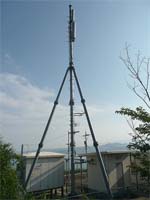Difference Between Analog and Digital TV

Digital TVs are beginning to gain widespread acceptance all over the world while analog TVs are slowly disappearing. The primary difference between these two types is with the signals that they can process. Analog TVs are restricted to analog signals while Digital TVs can process digital signals and analog signals.
Since analog TVs can only process analog signals, it is also quite prone to the problems that analog signals experience. Problems like noise, interference, and even distorted displays are very common in analog TVs. Though digital TVs can still be affected by these problems if the signal is also analog, switching to a digital signal almost eliminate it.
Analog TV sets use cathode ray tubes as their display while digital TV sets use flat panel display like LCD, plasma, or LED. Consequently, analog TV sets are big and bulky compared to digital TV sets. Analog TVs also consume a lot more power compared to digital TVs.
Digital TV sets can be in 480p or more commonly known as SD or even in 780p or 1080i/p which is known as HD or high definition. HD makes it possible to increase the size of the TV sets without compromising the quality of the image on screen. Analog TV sets use the standard definition. Though there have been attempts to implement HDTV analog sets at first, the requirements in terms of bandwidth were just too great for it to be feasible.
Analog TVs are usually limited to sizes of below 30 inches because creating much larger screens pose greater challenges without any real gains in the image quality. Digital TVs have been growing since they were made and screen sizes of over 50 inches are now quite common.
There are still some benefits that you can get with analog TVs that are mostly due to its use of CRT. Analog screens have a very fast response time making it excel in showing fast motion videos. Analog TVs also have better contrast compared to most digital TVs. There might still be advantages for analog TVs, but developments in technology have begun to improve on the shortcomings of digital TVs.
Summary:
1. Analog TVs can only accept analog signals while Digital TVs can accept both digital and analog signals
2. Analog TVs are prone to noise and distortion while Digital TVs are not
3. Analog TVs are usually made with CRT displays while Digital TVs use flat panel displays
4. Digital TVs can be in HD while analog TVs can only be in SD
5. Analog TVs are restricted to under 30 inches while Digital TVs above 50 inches are already common
6. Analog TVs have advantages over digital TVs that are largely related to the CRT
- Difference Between Sony Cybershot S Series and W Series - December 22, 2012
- Difference Between Samsung Galaxy S3 and iPhone 5 - December 21, 2012
- Difference Between Samsung Galaxy S2 (Galaxy S II) and Galaxy S 4G - December 20, 2012
